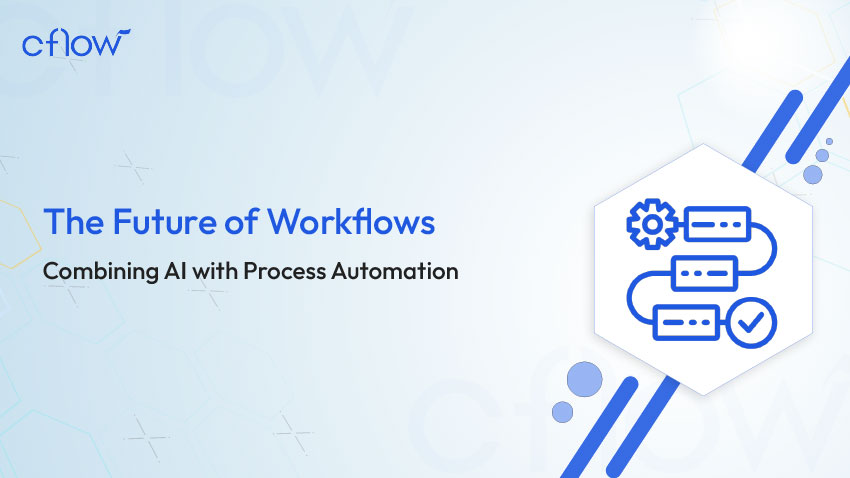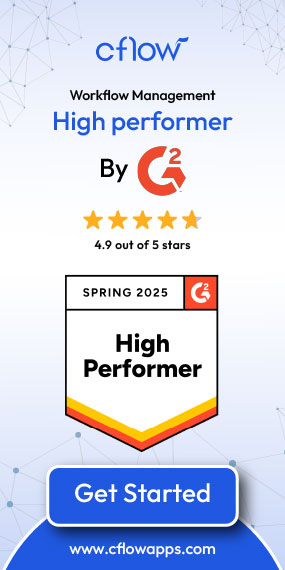The Future of Workflows: Combining AI with Process Automation

The past decade has significantly changed how teams transition tasks from the “to-do” list to the “done” list, without causing a loud fuss. The change began with solutions like Robotic Process Automation (RPA) that consisted of automatic scripts replacing repetitive mouse clicks. Eventually, at a later stage, automation solutions emerged, enabling non-technical employees to develop simple and efficient workflows via no-code workflow automation platforms.
When we look at today’s scenario, AI is one of the major factors contributing to this revolution. AI is elevating automation to the next level, redefining business efficiency to new bounds. Workflows have shifted from operating with no human intervention to taking one look at history and being able to learn and operate accordingly.
Table of Contents
From RPA to Intelligent Automation: The Evolution of Workflows
The traditional RPA technique was effective because it functioned explicitly: If X happened, it clicked on Y. Such a ruleset fits well with tasks that never require changes.
Modern, AI-enabled ticketing apps embedded in Slack exemplify this shift: a teammate can flag a landing-page bug during a stand-up call, type a slash command, and instantly create internal tickets on Slack that capture context, prioritize urgency, and route tasks to the correct pod. The use of machine-learning models in the whole automation scheme causes the following changes, among other things:
1. Adaptive rules
As opposed to fixed paths, AI models, a decision tree, can change triggers to meet new conditions on their own. An email workflow might adjust the volume of sends automatically if the open-rate predictions decrease below the target, protecting the sender’s reputation, without the need for any human in the loop.
2. Real-time insights
With computer vision tools and NLP applications, unstructured data such as call transcripts, design mock-ups, and store comments are extracted, resulting in keywords and sentiment scores that are piped to the automation engine as insights to pre-train.
3. Continuous learning loops
The concept of constant learning loops refers to the situation where performance data becomes part of the training pipelines, resulting in the workflow of the future getting significantly brighter than today’s. A lead-scoring model initially employing “subjective” methods to determine the lead quality now uses itself to learn from down-funnel conversions, hence the system gradually improves resource allocation through the sales department.
Concisely, it is the AI that transforms deterministic process maps into vague systems that can think, act and do everything quickly.
Bringing AI Directly Into Daily Operations
Smart automations are those that make people’s jobs less tedious. Projects carried out by the marketing team are generally found in their workspace and on the platform. The developmental aspect that differentiates these tools from the older ones is the cognition factor
Intent classification
Highly sophisticated language models (HLMs) analyze the ticket interpretatively, understand whether it is a modification, a problem related to the data layer, or a design request, and finally label it accordingly without the necessity of choosing from the drop-down list.
Effort estimation
Regularly, the system understands the time of the past to solve any concern, thus it knows and announces a real-time to finish the issue so that the people are informed and the work to be arranged for the managers is facilitated.
Auto-assignment & draft replies
AI specifies the suitable developer or designer, extends a thank-you note to the requester, and inscribes the ticket in the main project table using the software. At times, it is easy to get the whole task done in seconds because this is well-known by AI, which knows who is the most eligible person to do the work, provided that a cumulus of previous interactions will undoubtedly offer a more helpful answer than one person with a history of contact.
Marketing experts focused on time to market when digital marketing became mainstream; eliminating these additional interactions can considerably shorten the time needed for the product to reach the market and make the process less painful for those unaware of what is going on in other departments internally.
Data-Driven Decision-Making at Every Step
Automation aims to eliminate tasks requiring little mental effort, whereas AI can do that quickly and decide on a particular issue if a problem arises. This is a principle of a campaign approval scenario.
1. Adherence to content
Computer vision–powered models detect Trademark violations and brand security issues and confirm where to name legal deadlocks.
2. Budget control
A model is used to predict potential discrepancies between a company’s current and past spending, so purchase requests become inactive until the variances are justified.
3. Using the best channels
High value is added to the firm’s owned properties via a machine learning technique that keeps trial-and-error tests running (like email topics or banner ideas) and switches the budget to the best-performing items automatically.
The data collected from each source is used to make better decisions in the future, with exceptions that require strategic attention from isolated humans.
Efficiency, Compliance, and Customer Experience: Triple Wins for Marketing Teams
Following an AI-driven automation path seldom comes with one benefit. Instead, the value usually arises across various interconnected domains
Operational efficiency
Eliminating manual triage, duplicate data entry, and departmental ping-pong will mean less work for small teams to handle, starting with enterprise-grade workloads.
Governance & consistency
Automatic policy enforcement guarantees that every step (from user-consent checks to local tax rules) is executed exactly as written, thus reducing the audit burden and brand risk.
Customer delight
Quicker cycle times increase the probability that leads can see updated creatives faster, support inquiries are quickly identified, and personalization engines keep pace with changing user preferences.
To a marketing department being measured on the speed and quality of both, these results manifest directly in higher pipeline velocity and increased lifetime value.
Getting Started: Practical Steps to Prepare Your Organization
1. Map pain points first
Identify repetitive, rules-based tasks (for example, weekly report compilation, budget approvals, asset localization). Don’t try to implement AI everywhere; just focus on those projects that represent a clear return on investment.
2. Choose modular platforms
Give preference to tools that come with an API and plug-in frameworks. This prepares your resource stack for the future as new channels emerge and the model evolves.
3. Invest in data hygiene
The AI is as efficient as the quality of the data provided. Make the information clean by means of consolidation, improving the CRM to implement metadata standards on creative assets.
What should you do next?
Thanks for reading till the end. Here are 3 ways we can help you automate your business:

Do better workflow automation with Cflow
Create workflows with multiple steps, parallel reviewals. auto approvals, public forms, etc. to save time and cost.

Talk to a workflow expert
Get a 30-min. free consultation with our Workflow expert to optimize your daily tasks.

Get smarter with our workflow resources
Explore our workflow automation blogs, ebooks, and other resources to master workflow automation.
Get Your Workflows Automated for Free!


